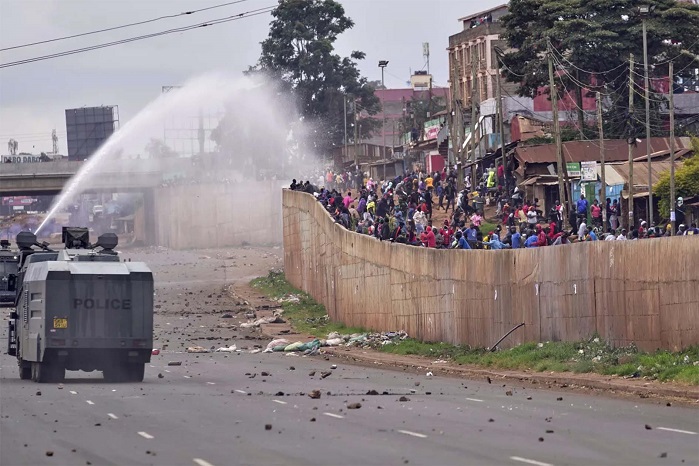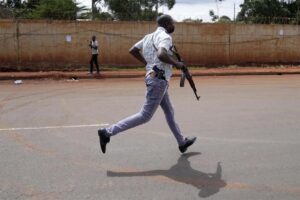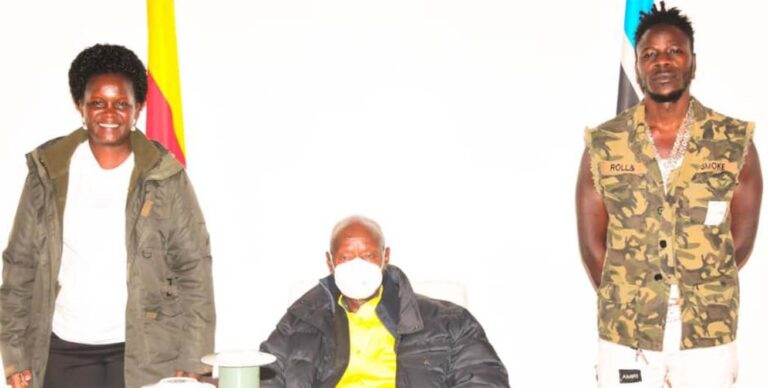
Police quelling demonstrations as protesters went on rampage on Tuesday
HABARI DAILY I Kampala, Uganda I At least 31 Kenyans have been confirmed dead and 532 arrested during anti-government protests known as ‘Saba Saba’ marches, which broke out at the beginning of the week.
Thousands of people marched in Nairobi last week to mark the anniversary of the previous year’s anti-tax protests, as well as the 35th anniversary of the historic Saba Saba – meaning “seven-seven” – protests of 7 July 1990, which launched Kenya’s push for multi-party democracy.
On Tuesday, the National Commission on Human Rights (KNCHR) office called for accountability after 31 people are killed, and 107 others wounded nationwide.
KNCHR revealed that Tuesday’s toll takes the number of people dead in the protests since they began last year to more than 100 since last year.
These includes at least 16 people killed in nationwide rallies against police brutality and government corruption in Kenya, on June 25, less than two weeks ago.
KNCHR also reported two forced disappearances in the wake of Monday’s marches, and at least 532 arrests.
Violent genesis
This week’s protests came amid more than a year of mostly youth-led protests that have swept across Kenya since June 2024.
These were triggered off after President William Ruto proposed tax rises in a move that would have intensified the economic distress many Kenyans are facing.

President William Ruto shakes hands with the UK Prime Minister, Keir Starmer during his recent visit to 10 Downing Street
Ruto’s uncouth move triggered anger about wider issues, including the state of the economy, corruption and police brutality. After youthful protestors realised that they didn’t have an ally in the President anymore, they blatantly called for his resignation.
“No Kenya, no us”
Ruto recently stated that he is inseparable from Kenya as a nation state. He said he was not going anywhere, warning that if there was no Kenya for him, that also would be the case for others.
“If we go this route, we will not have a country,” he said of the protest movement. “Yes, and the country does not belong to William Ruto. The country belongs to all of us. And if there’s no country for William Ruto, there’s no country for you,” he said.
Many youths are now wary, realising that the man they are fighting is battle-hardened and is hell bent to complete his first term which runs up to 2027.
This was after their actions have been met with harsh repression from the police, as well as people sorrounding the President.
Kipchumba Murkomen, Ruto’s interior minister, has also spoken forcefully against protesters, saying they will be dealt with harshly. No wonder they have been met with brutal force, and bloodshed has ensued.
KNCHR said that the marches also saw clashes erupt between protesters and police way beyond the capital, Nairobi and Eldoret city, the bastions of demonstrations.
It further said that the protests on Monday took place in 20 of Kenya’s 47 counties on Monday, including Nairobi, Kajiado, Nyeri, Mombasa, Kisii, Embu, Kisumu, Kiambu, Meru, Nakuru, Nyandarua, Vihiga, Narok, Kirinyaga, Uasin Gishu, Tharaka Nithi, Makueni, Laikipia and Kakamega.
The human rights body has since accused the police of cooperating with armed gangs, who were armed with machetes and spears, in the wake of the violence.
Says KNCHR: “We strongly condemn all human rights violations and urges accountability from all responsible parties including police, civilians and all other stakeholders.”
“Political bastards”
Kenyans are proving to be intolerant of political bastards, who make promises during elections and do not stand by them.
Kenya’s fifth president became unpopular barely two years into his presidency after proposing aggressive tax measures that many saw as a betrayal of his campaign promise to support working-class people.
His campaign strategy appealed to millions struggling with joblessness and inequality. Ruto also aligned himself with the evangelical Christian movement. He was often seen carrying a Bible and preaching at pulpits, which made his likeable and humane.

A plain clothed police officer confronts protesters in Nairobi
Then came in the taxation proposal and everything went way wire. Ruto said new taxes were necessary to keep the government running. The people said no.
He was acting like a chameleon, since he had previously positioned himself as the leader of a so-called “hustler nation, ready to empower ordinary Kenyans.
But after taking office, Ruto spoke of an urgent need to make Kenya’s debt sustainable. The tax hikes in a controversial Finance Bill came months later. He also removed the fuel subsidies that many Kenyans had come to take for granted.
Thousands chose to take to the streets in an erratic display of anger. They were inflamed by what they called incessant deal-making under Ruto.
In an incident that opened people’s eyes to the true leaders they were dealing with, last year, Ruto was forced to terminate an agreement worth an estimated $2 billion that would have seen Kenya’s main airport controlled by the Indian conglomerate Adani Group.
Survival for the fittest
Ruto survived the tax-protest movement last year as thousands of young people took to the streets in an unsuccessful attempt to force his resignation.
In the most violent incident that left at least 22 people dead, protesters ransacked shops and attempted to burn the parliamentary building in the capital, Nairobi. That move was quelled but not the people’s anger.
Ruto now faces a new wave of protests provoked most recently by the death of a blogger in police custody. Many Kenyans saw the incident as symptomatic of bad rule in Kenya.
But all signs are indicative of the fact that President Ruto is firmly in control of the legislature and security apparatus.
Whether true democracy in Kenya is well on its way to the burial ground, depends on who you talk to in the political sphere. But such has happened in many an African state, meaning Kenya will not be the first, nor the last.




